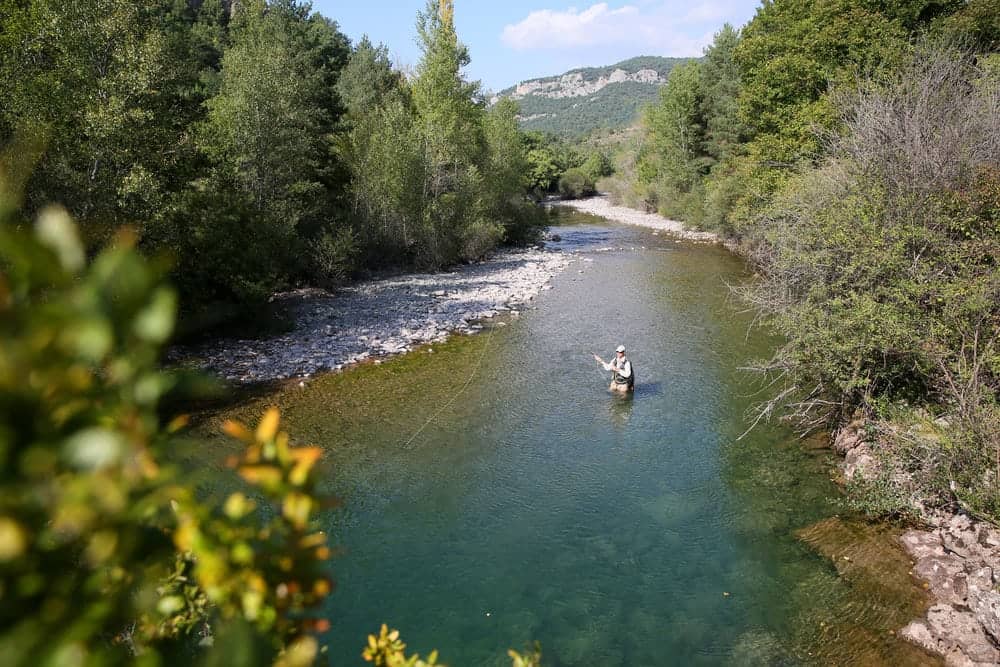
19 Major Gatlinburg Fishing Streams Now Open
For the first time since the Great Smoky Mountain National Park’s establishment in 1937, all 2,900 miles of the park’s streams are now open for fishing. The reopening of Lynn Camp Prong following a seven-year native, brook trout restoration project marks the park’s complete stream fishing availability, which is great news for both local and visiting anglers. The park and surrounding area boasts some of the most diverse fish populations in the country, making Gatlinburg fishing streams a destination for fishermen of all ages and skill level.
Stream Mapping Project Complete
In addition to the reopening Lynn Camp Prong, the park has completed a three-year stream mapping project, a significant accomplishment in terms of keeping Smoky Mountain and Gatlinburg fishing streams and their inhabitants healthy. In conjunction with scientists from Tennessee, North Carolina and the United States Geological Survey (USGS), a GPS verification system and aircraft-mounted scanners were used to re-inventory the streams throughout the park, revealing approximately 900 miles that were previously uncatalogued when using topographic maps. This information had been entered into the National Hydrography Dataset (NHD), which provides researchers and the public detailed information about streams throughout the country. Park staff and research partners rely heavily upon the accuracy of information in the NHD in maintaining for the national park water quality and ecosystem health.
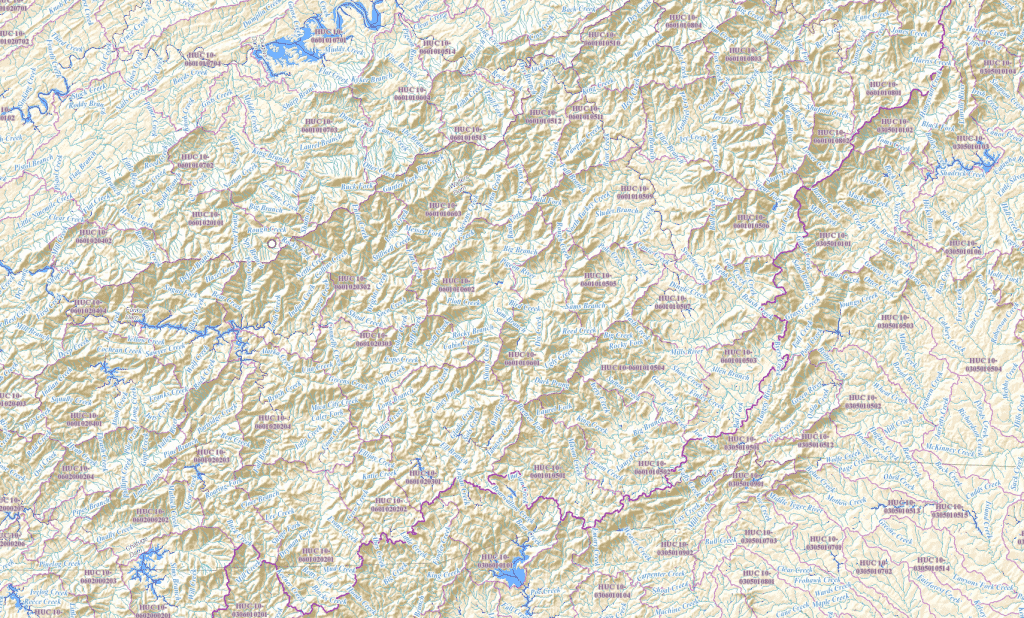 Great Smoky Mountains Fishing Regulations
Great Smoky Mountains Fishing Regulations
Before slipping on your waders and casting a line, be sure to familiarize yourself with the Great Smoky Mountains Fishing Regulations. We’ve compiled the need-to-know fishing regulation information below:
License Requirements
- Anglers must have a valid fishing license or permit from Tennessee or North Carolina. No trout stamp is required.
- Licences and permits cannot be purchased at the park.
- Special permits are required for fishing in Gatlinburg and Cherokee.
Tennessee License Requirements
- Locals and visitors under the age of 13 are not required to have a license to fish.
- Residents age 65 and older may obtain a special license from the state.
Season
- Fishing is permitted year-round in open waters.
Time
- Fishing is allowed from a half hour before official sunrise to a half hour after official sunset.
Daily Possession Limits
- Five brook, rainbow or brown trout, smallmouth bass, or a combination of these, each day or in possession, regardless of whether they are fresh, stored in an ice chest or otherwise preserved in permitted. The combined total of these fish must not exceed five.
- 20 rock bass may be kept in addition to the above limit.
- A person must stop fishing immediately after obtaining the limit.
Size Limits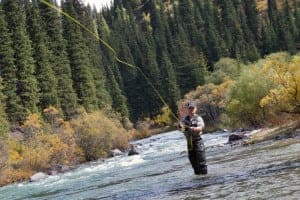
- Brook, rainbow and brown trout: seven inch minimum
- Smallmouth bass: seven inch minimum
- Rockbass: no minimum
- Trout or smallmouth bass caught less than the legal length must be immediately returned to the water from which it was taken.
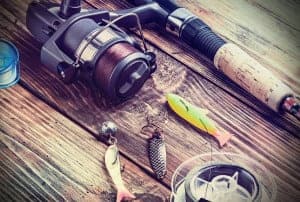 Lures, Bait and Equipment
Lures, Bait and Equipment
- Fishing is permitted only by the use of one hand-held rod.
- Only artificial flies or lures with a single hook may be used. Dropper flies may be used. Up to two flies on a leader.
- Use or possession of any form of fish bait or liquid scent other than artificial flies or lures on or along any park stream while in possession of fishing tackle is prohibited.
- Prohibited baits include, but are not limited to, minnows (live or preserved), worms, corn, cheese, bread, salmon eggs, pork rinds, liquid scents and natural baits found along streams.
- Use or possession of double, treble, or gang hooks is prohibited.
- Fishing tackle and equipment, including creels and fish in possession, are subject to inspection by authorized personnel.
Additional Notes
- It is unlawful to dispose of fish remains on land or water within 200 feet of a campsite. The National Park Service recommends disposing of fish entrails in a deep pool downstream for the campsite.
- Disturbing and moving rocks to form channels and rock dams is illegal in the park.
For more detailed information about fishing in the Great Smoky Mountains National Park, take a look at the National Park Service website here.
Now that you’re up to date on all the latest fishing news and know-how, grab your fishing rods and enjoy the 2,900 miles of Gatlinburg fishing streams waiting for you. For more fun things to do during your vacation, take a look at all of the best Smoky Mountain attractions for your trip here: https://www.visitmysmokies.com/what-to-do/.


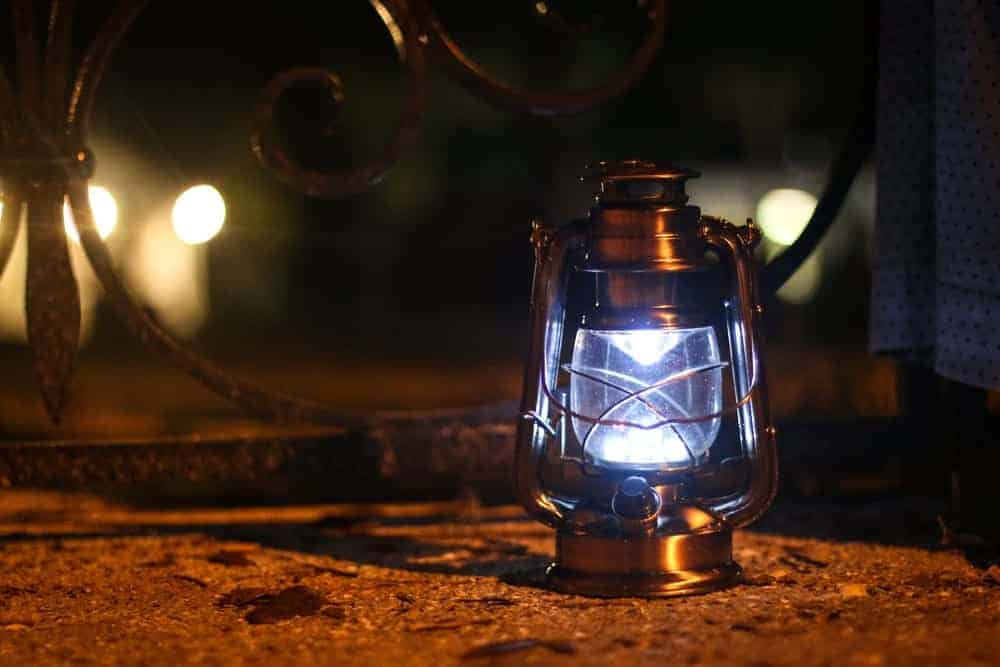



Comments are closed.